Camano Center Trail
Island County Master Gardener volunteers created the markers and this guide to increase public awareness of native plants and their benefits in landscapes. This project was funded by the Island County Master Gardener Foundation.
Protecting, restoring and adding native plants in your garden benefits our local ecosystem, since they require less irrigation and chemical inputs and are more resilient and sustainable than non-native species. To learn about other native plants, use the Sources list for each plant. For free advice on gardening and plant problems in all of Island County, call the Master Gardener Hotline, 360- 639-6058, or visit WSU Hortsense. Thank you for visiting.
Select drop-down arrow for detailed information on each plant.



The bigleaf maple stands as a majestic presence in any landscape. Fast-growing, the bigleaf maple’s common and scientific names (macrophyllum) signify how its leaves can grow up to 12 inches across – largest of any maple.
Taxonomy: Aceraceae family
Plant Requirements:
Zone: 5 to 9
Sun: Prefers sun but tolerates full shade
Moisture: Medium
Plant Characteristics:
Type: Deciduous trees
Native: Yes
Size: 80 to 100 ft high x almost as wide
Bloom: The greenish-yellow hanging flower clusters bloom before leaves appear in April and May. The flowers ripen in the fall, from September to October, yielding typical-paired seeds referred to as winged “samaras” or “helicopter seeds.” Seeds are usually distributed by wind from October to January.
Additional Characteristics: Bigleaf maple is known by its 5-lobed leaf which can be quite large, as much as 12 inches across, but usually a smaller 6 inches. The leaf structure is opposite. When young, bigleaf maple grows rapidly but slows down when older. It typically grows 30-75 feet in cultivation but can mature to more than 100 feet tall and as wide as it is tall with the trunk being more than 3 feet in diameter. It is a spreading tree with a rounded canopy. Bigleaf maples may live to be 200 years old. Their habitat spreads from the southeast Alaska Pacific coast to southern California. This majestic tree supports many life forms. For instance, it has ridged bark deep enough for plants that grow on trees without soil (epiphytes), such as species of mosses, lichens, and the licorice fern, Polypodium glycyrrhiza. The environment created by thickening and decomposing moss layers allows tree seedlings to germinate on the bark.
Pests: Several pests may cause minor damage: the carpenter worm (Prionoxystus robinae), roundheaded borers, powderpost beetles (Ptilinus basalis), and leafhoppers (Empoasca elongate). Root pathogens (Armillaria spp.) and butt rot attack older trees. Verticillium wilt (Verticillium albo-atrum) sometimes kills bigleaf maples in the forest.
Garden Use: Too big for a small yard, the bigleaf maple is perfect for larger yards and parks. Its canopy creates a shady and cool space beneath its leafy branches. In fall, the leaves turn yellow and then brown after falling, creating a carpet throughout the winter.
Use by People: Coastal Indigenous American tribes used this tree in many ways. The bark was used for making rope and the leaves for containers and lining cooking pits. The wood was used for artwork and essential items such as dishes and paddles. In fact, it was known as the “paddle tree.” Boiling the sap provided maple syrup and the sap was also used to make medicinal aids such as salves. Seeds and flower clusters were eaten.
Use by Wildlife: All parts of the bigleaf maple – the seeds, buds and flowers – are food for many small mammals and birds. Douglas squirrels store the seeds and you can find flower clusters on the ground after squirrels have nibbled on them. Small mammals and deer eat the young seedlings and saplings.
Sources: Plants of the Pacific Northwest Coast, Jim Pojar and Andy MacKinnon, Lone Pine Publishing, 2004; pnwplants.wsu.edu; oregonflora.org; wnps.org; nativeplantspnw.com; owic.oregonstate.edu.
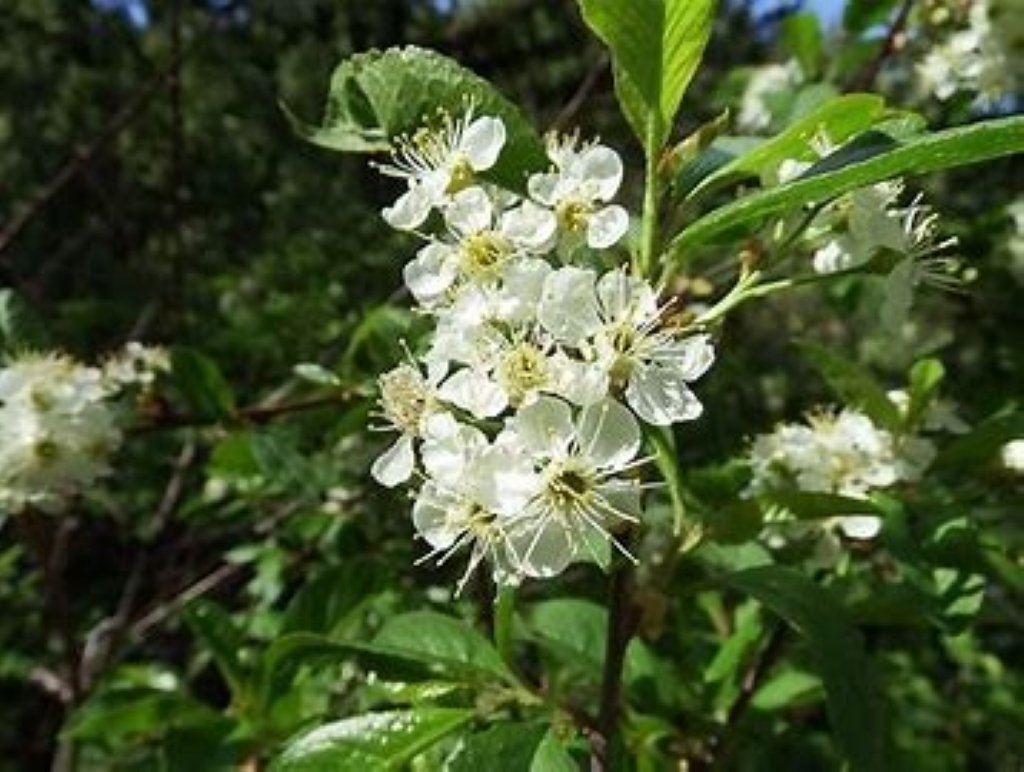

Aptly named, bitter cherry’s tall lean form can easily blend into the forest, but it will be noticed in the spring when appealing white flower clusters appear in abundance and transform it into a champion.
Taxonomy: Rosaceae family
Plant Requirements:
Zone: 4 to 8
Sun: Full to partial sun
Moisture: Dry to moist
Plant Characteristics:
Type: Deciduous shrub or tree
Native: Yes
Height: Up to 50 ft high x 30 ft wide
Bloom: In the spring, abundant clusters of fragrant small white flowers transform this rather ordinary looking shrub or tree into a noticeable beauty. Each flat-topped cluster is composed of five to ten (or more) flowers one-half inch wide with five notched petals.
Additional Characteristics: Flowers evolve in late summer or early fall to become bright red small fruits that are extremely bitter. The seeds and leaves of bitter cherry contain the toxin hydrogen cyanide.
Structure and Shape: Bitter cherry can form shrubby thickets or develop into tall slender trees. One-to-three-inch alternate leaves are oblong to oval with finely toothed edges and rounded tips. Two tiny nectar glands located at the base of each leaf are non-flower sources of nectar common to cherry trees. Leaves are green and smooth on top, may be hairy on the underside and turn yellow in the fall before dropping. Flowers have both male and female organs (hermaphrodite) and are pollinated by insects. On older trees, bark is reddish brown or gray with horizontal lenticels, which are raised pores that allow for gas exchange between internal tissues and the atmosphere through the otherwise thin bark.
Adaptation: This native plant is found from southern British Columbia to southern California along the coast and through the Cascades and Sierra Nevadas. It has been sighted as far southeast as New Mexico. Bitter cherry grows best in full sun with moist, nutrient-rich soil but is adaptable to a wide variety of soil types and can succeed in partial shade. It is fast growing and can quickly establish in disturbed areas. Bitter cherry is often found in young forests and forest edges. It usually doesn’t live more than 50 years.
Pests: None reported.
Garden Use: Bitter cherry has many characteristics that make it a desirable addition to a woodland garden. It has showy spring flowers, bright red fruit and interesting bark on mature trees. The bark can appear like dark paper birch.
Use by People: The outer bark can be peeled off in strips much like birch trees and used in that form or made into a type of string. The bark was traditionally used in medicinal preparations or to make watertight baskets and mats. It was also used as a rope-like binder to wrap joints when making implements such as spears, arrows and fire drills. Additionally, the bark was used to decorate handmade items. Green and dark grey dyes were made from leaves and fruits. Today bitter cherry wood is used for fuel and is sometimes used to make furniture.
Use by Wildlife: Deer, elk and black bear browse bitter cherry leaves and stems. The cherries are eaten by birds, small mammals, slugs, and rodents.
Sources: Plants of the Pacific Northwest Coast, Jim Pojar and Andy MacKinnon, Lone Pine Publishing, 2004; Native Trees of Western Washington, Kevin W. Zobrist, WSU Press, 2014; pnwplants.wsu.edu; nativeplantspnw.com; plants.usda.gov; greentimbers.ca.


The largest of the American poplars, black cottonwood is also one of the largest hardwood trees in western North America. This species is also known as black poplar.
Taxonomy: Salicaceae family (willow)
Plant Requirements:
Zone: 5 to 9
Sun: Full sun
Moisture: Medium
Plant Characteristics:
Type: Deciduous tree
Native: Yes
Size: 150 ft high x 40 ft wide
Bloom: Fragrant white flowers bloom from early March to June. Seeds ripen in late May to July and are dispersed by wind or water.
Additional Characteristics: Trees begin to flower ten years after planting. Black cottonwood has male and female catkins produced on separate trees. Female catkins are up to 3” long and bear many silky tufts – referred to as “cotton” – which contain small seeds (2-4 valved capsules). The cottony hairs help carry the seeds in the wind. For some, cottonwood pollen is a major allergen.
Structure and Shape: Black cottonwood is a Pacific Northwest native deciduous tree which can grow to a very large size. The leaves are alternate, simple, broadly ovate, and 3” to 5” long. Leaves are dark green on their upper side and silvery green on their lower side. Flowers appear in April in areas west of the Cascades. The bark of black poplar is gray-brown with flat-topped ridges alongside v-shaped grooves. During the winter, buds are well known for their length (up to 1”), their orange-brown color, and their balsam fragrance.
Adaptation: Black cottonwood grows on a variety of soils and sites. While it prefers wetter sites, it is considered drought tolerant.
Pests: None
Garden Use: It is a flowering tree with good fall color. However, the black cottonwood doesn’t suit most gardens because it grows fast and is large. The “cotton” produced by the female trees is abundant and is considered by many to be very messy in the landscape. However, when the leaves and branches fall and decompose, nutrients for the soil are increased. Black cottonwood is also valuable for restoring floodplains and managing overly wet areas.
Use by People: Some Indigenous American tribes used the cottonwood tree to build small dugout canoes and to smoke fish. The bark was stripped off for making buckets which were waterproofed with gum from the spring buds. This gum, along with the leaves and bark, had many medicinal uses. In addition, sweat lodges were built with the young shoots. Black cottonwood is used today for paper products and some building wood, such as plywood. Hybrids of the black cottonwood are being grown specifically for paper products and biofuels.
Use by Wildlife: During hot weather, black cottonwoods present a shaded, cooler area for wildlife. Many bird species favor it for nesting or perching. The tree serves a wide variety of animal species. For instance, roots of the tree along streams stabilize banks creating beneficial fish habitat. Deer and elk use it for cover more than for forage. Rabbits and hares eat the bark, and beavers eat it and use it for dam building.
Sources: Plants of the Pacific Northwest Coast, Jim Pojar and Andy MacKinnon, Lone Pine Publishing, 2004; pnwplants.wsu.edu; oregonflora.org; nativeplantspnw.com.


The California beaked hazelnut is aptly named. Cornuta means “horn,” describing the husk enclosing the nut which extends to form a horn or beak. The cornuta species is also known as beaked hazel, beaked filbert, and American cuckold nut. The tree specimen found here is the variety californica, commonly referred to as the California beaked hazelnut or western hazelnut. It is further discussed under Adaptation.
Taxonomy: Betulaceae family
Plant Requirements:
Zone: 5-8
Sun: Sun to partial shade
Moisture: Moist but well-drained sites
Plant Characteristics:
Type: Broadleaf, deciduous shrub or tree
Native: Yes
Size: 10-45 ft high x 10-20 ft wide
Bloom: Male flowers are long pendulous stalks (catkins) in clusters of 2-3 which flower before the leaves appear in the spring from January to March. Female flowers are tiny flowers with bright red stigma on ends of branches. Female flowers develop into fruit resembling acorns, which are 3/4″ in diameter and are enclosed by two leafy, prickly, husk-like bracts. These nuts are in clusters of 2-3 and will ripen in the fall. The beak of the California hazelnut is smaller than that of the eastern hazelnut, Corylus cornuta var. cornuta.
Additional Characteristics: The California beaked hazelnut is a major allergen.
Structure and Shape: California beaked hazelnut grows in a dense clump and spreads by suckers which, if left unchecked, will eventually develop a thicket. The shrub or tree varies greatly in height depending on its location. In shrub form, this hazelnut variety is typically 10-15 feet tall. However, as a tree, it can grow significantly higher, up to 45 feet tall. The leaves are 4” long, 3” wide, deeply ridged with serrated edges, alternately situated, simple in form, and elliptical shaped with a sharp-pointed tip. Leaves turn brilliant yellow in fall. Thin, brown branches grow in a zigzag formation.
Adaptation: The species is found from British Columbia to California and east to Newfoundland and Georgia, but it is separated into two varieties. The California hazelnut, or western beaked hazelnut, C.C. var. californica, is found from British Columbia to California, mostly on the west side of the Cascades. The eastern beaked hazelnut, C.C. var. cornuta, is found from British Columbia through the northeastern corner of Washington to the eastern shores of North America. The two varieties hybridize where their ranges overlap in southern British Columbia and eastern Oregon. The California beaked hazelnut grows well in open forests, shady openings, thickets, or rocky slopes and streamside habitats. It will regenerate from its root crown following a fire.
Pests: Hazelnut weevil, Filbert worm and acorn moth are noted.
Garden Use: This large shrub is a great choice for restoring a stream bank.
Use by People: Indigenous Americans favored California beaked hazelnuts. They removed prickly husks by burying nuts in the ground for weeks, allowing the husks to rot away. They consumed the nuts fresh or roasted and stored some for winter. Branches were used for baskets and fish traps and were twisted for ropes. Today, the European species Corylus avellana and Corylus maxima are the varieties grown commercially.
Use by Wildlife: The nuts are a tasty nutritious treat relished by squirrels, as well as deer, grouse, pheasants, and Steller’s Jays. Finding nuts after the animals and birds have visited is a challenge. Animals and birds use the thicket for cover and nesting sites.
Sources: Plants of the Pacific Northwest Coast, Jim Pojar and Andy MacKinnon, Lone Pine Publishing, 2004; pnwplants.wsu.edu; oregonflora.org; nativeplantspnw.com.


Common snowberry is a shrub known for its white, waxy berry-like drupes that provide winter food for area songbirds. This shrub is also referred to as waxberry or coralberry.
Taxonomy: Caprifoliaceae family
Plant Requirements:
Zone: 3-8
Sun: Full to partial sun
Moisture: Dry to moist
Plant Characteristics:
Type: Deciduous shrubs
Native: Yes
Size: 5 ft high x 6 ft wide
Bloom: In spring the shrub produces pink to white bell-shaped flowers which form dense clusters on the ends of branches. Later, clusters of white waxy berry-like drupes (3/8 inches) form and stay on the shrub through the winter months. Over time the berries will disintegrate if not eaten by the birds.
Additional Characteristics: Common snowberry grows from Alaska to California and across the northern US and the Canadian provinces. It grows in low to mid elevations and can be found in varying ecosystems such as sun-lit forests, ravines and thickets, slopes (especially rocky), river edges or plains, and sandy beaches. This shrub prefers non-wetlands but can sometimes be found in wetlands. All parts of the plant are poisonous if eaten.
Structure and Shape: Common snowberry is a deciduous shrub which typically grows in a rounded thicket spreading by root suckers or rhizomes. Shrubs are multi-branched and slender and have brown, unremarkable bark. The oval leaves are arranged in an opposite fashion and are thin and light green on their upper surfaces with paler green below. Leaves on sterile shoots are irregularly lobed. The leaf edges are smooth or wavy-toothed.
Adaptation: Highly adaptable, the common snowberry is best in full sun to partial shade. While optimal soil is moist and well-drained, this plant will tolerate both poor soil and neglect.
Pests: None
Garden Use: Common snowberry is added to landscapes as an ornamental shrub favored for its white berries that stand out against the leafless branches in winter. The presence of its showy spring blooms adds to its popularity in gardens. The shrub’s vigorous and deep roots make it an excellent choice for erosion control, especially for use on banks.
Use by People: Indigenous Americans called the shrub “corpse berry” or the “snake’s berry” since the berries were considered poisonous. The berries and twigs were used for medicinal purposes as well as for shampoo. Branches were converted into brooms and arrows.
Use by Wildlife: The flowers attract hummingbirds and butterflies but are mainly pollinated by bees. Both birds and bears eat the fruit which can be toxic to some animals such as fish. Common snowberry is an important browse for deer, elk and moose. Additionally, its thicket growth pattern provides good cover and nesting sites for gamebirds, rabbit and other small animals.
Sources: Plants of the Pacific Northwest Coast, Jim Pojar and Andy MacKinnon; Lone Pine Publishing, 2004; pnwplants.wsu.edu; oregonflora.org; nativeplantspnw.com.
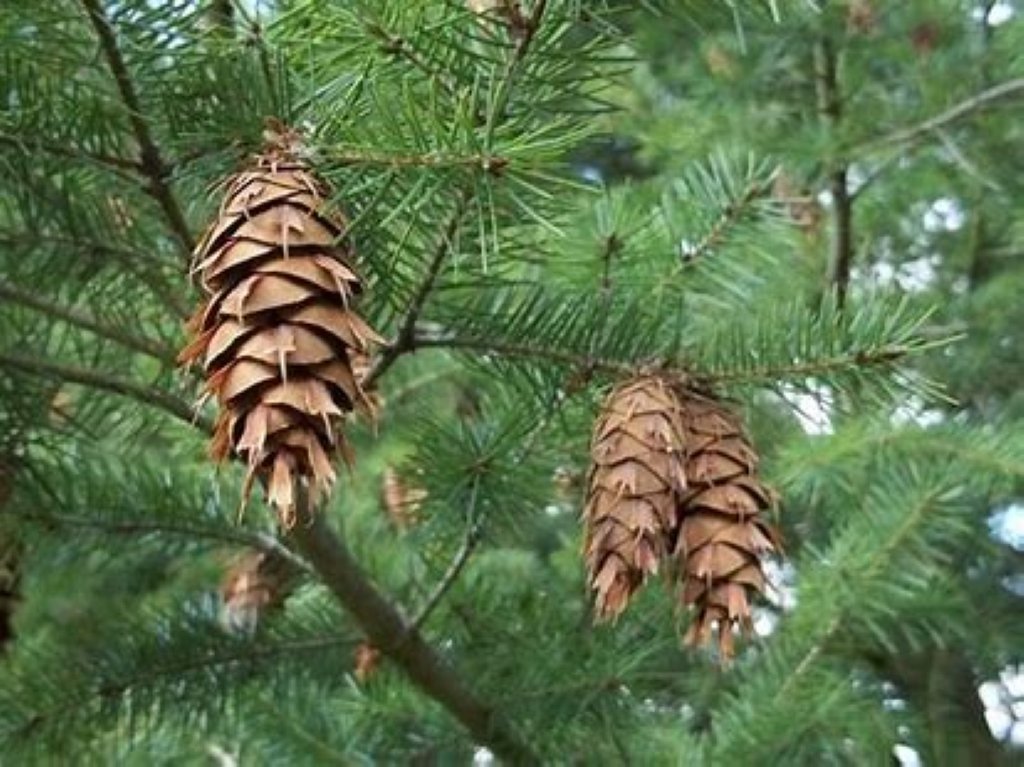

Douglas-fir is not a true fir, thus the hyphen. It is the largest member of the Pinaceae (pine) family.
Taxonomy: Pinaceae family
Plant Requirements:
Zone: 5 to 8
Sun: Full sun
Moisture: Dry
Plant Characteristics:
Type: Coniferous tree, evergreen
Native: Yes
Size: 200 ft high x 30 ft wide
Bloom: Yellow to deep red flowers April to May (male pollen cones, not true flowers)
Additional Characteristics: One of the world’s greatest and most valuable timber trees.
Structure and Shape: The tree can grow over 250 feet tall and can live for more than 1,000 years. The shape is pyramidal with a somewhat open stature. Mature trees have drooping lower branches while the upper branches reach upward. Needles are 1 ½ inches long and flattened in cross section with one groove on the upper surface and two white bands of stomata on the lower surface. They are arranged radially on the branches, like a bottlebrush, and the brown spear-like buds at the end of the twigs are distinctive. It is a monoecious species having both male and female reproductive parts on the same tree. Male pollen cones are small, oblong, red to yellow and appear near the branch tips in the spring. Female seed cones hang from the branches and are 3 to 4 inches long. The edges of the scales on the cones are rounded and three-lobed bracts extend beyond the cone scales. These unique forked cone bracts distinguish this tree from other conifers. Young trees have smooth gray bark and older trees have a thick red-brown bark with ridges and deep furrows.
Adaptation: Douglas-fir reaches its best growth in well-aerated, deep soils with a pH range from 5 to 6 and will not thrive on poorly drained or compacted soils. Douglas-fir is shade intolerant. The tree ranges from northern Vancouver Island south to California’s Santa Cruz Mountains. Mature Douglas-fir is well adapted to fire because of its thick bark that insulates and protects it from lower-intensity fires which remove competing vegetation. Even after a large fire hot enough to kill it, Douglas-fir’s regeneration abilities give it an advantage to re-colonize a fire-damaged site.
Pests: Root rot is a problem with poorly drained sites.
Garden Use: This fast-growing conifer is frequently included in garden landscapes, because it quickly forms a classic Christmas-tree shape pyramid.
Use by People: Indigenous Americans used wood from the tree for firewood and tools such as spear and harpoon shafts. Pitchy wood was used for torches and the pitch was used for sealant, salves and chewing gum. The needles were boiled to make tea. Douglas-fir is the most important US timber tree and is used for dimensional lumber, plywood, other building materials and paper products. It is still used for firewood and Christmas trees.
Use by Wildlife: Douglas squirrels, other rodents and some birds eat the small-winged seeds found inside Douglas-fir cones. The tree provides shelter for many birds, insects and animals.
Sources: Plants of the Pacific Northwest Coast, Jim Pojar and Andy MacKinnon, Lone Pine Publishing, 2004; Native Trees of Western Washington, Kevin W. Zobrist; pnwplants.wsu.edu; oregonflora.org; nativeplantspnw.com.

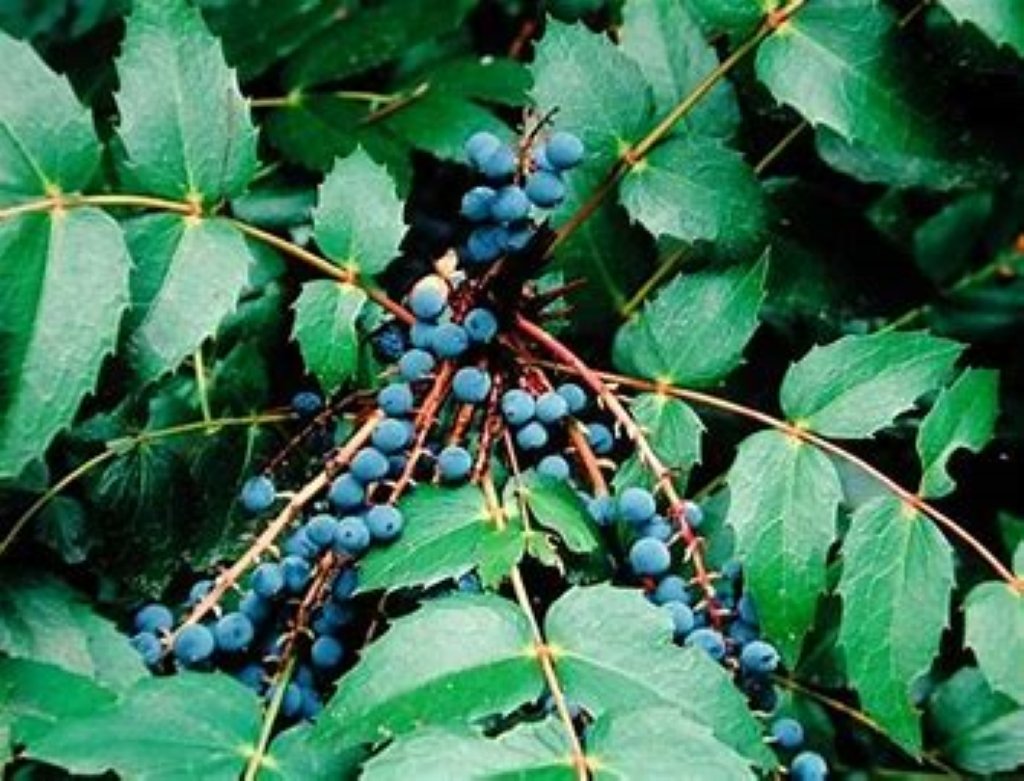
Also called Cascade Oregon grape, it is similar to tall Oregon-grape. As noted in the common name, the leaves of this plant are dull as compared to the very shiny leaves of the tall Oregon-grape.
Taxonomy: Berberidaceae family
Plant Requirements:
Zone: 5 ft to 9 ft
Sun: Partial shade
Moisture: Dry
Plant Characteristics:
Type: Evergreen shrubs
Native: Yes
Size: 2 ft high x 3 ft wide
Bloom: Bright yellow flowers in erect clusters to 8″ long beginning in early spring.
Additional Characteristics: The flowers produce dark blue berries with a light whitish coating called bloom. The shrub attracts hummingbirds, butterflies, bees, pest-eating insects, and other birds and pollinators. It is deer resistant.
Structure and Shape: Dull Oregon-grape is an erect, rhizomatous, evergreen, stiff-branched shrub. Bark and wood are yellowish. Leaves radiate from the center of the shrub. They are green, clustered, long, alternate, turning reddish or purplish in winter, with 9-19 leathery leaflets, and somewhat shiny on both surfaces. There are typically three central veins per leaflet. Leaflets are oblong to egg-shaped, with several prominent spiny teeth like English holly. Yellow flowers are erect and formed of many flowers that arise from the center of the shrub. Flower parts are in sixes.
Adaptation: The shrub prefers partial shade and is not too particular about soil conditions. It is slow-growing and does well in slightly acidic, low-nutrient soil in dry shade. Habitat includes open or shaded woods, forest gaps and rocky areas. Dull Oregon-grape grows extensively from southern British Columbia south to northern California.
Pests: None reported.
Garden Use: This plant is used for erosion control, hedgerows and ground cover. Its prickly leaves can serve as a low barrier.
Use by People: Indigenous Americans ate the mouth-puckering berries fresh but not in large quantities, often mixing them with salal or other sweeter fruit. The bark is yellow inside and the shredded stem and root bark were used to make a bright-yellow dye for basket materials. Bark and berries were also used medicinally.
Use by Wildlife: Flowers provide nectar for hummingbirds, bees and butterflies. Berries, which may remain on the plant into winter, are enjoyed by birds and mammals.
Sources: Plants of the Pacific Northwest Coast, Jim Pojar and Andy MacKinnon, Lone Pine Publishing, 2004; pnwplants.wsu.edu; oregonflora.org; plants.usda.gov.


Vaccinium ovatum, like Vaccinium parvifolium, the deciduous red huckleberry, is found in many of the region’s forest settings. For residential landscapes it is selected for its all-season appeal.
Taxonomy: Ericaceae family
Plant Requirements:
Zone: 7 to 9
Sun: Partial shade
Moisture: Medium
Plant Characteristics:
Type: Evergreen shrubs
Size: 4 ft high x 6 ft wide
Native: Yes
Bloom: Pink flowers April to May
Additional Characteristics: This shrub is in the same genus (Vaccinium) as blueberries, cranberries and lingonberries.
Structure and Shape: The shrub is upright, bushy, evergreen and broad-leaved. Its height is quite light-dependent growing to 2 to 3 feet in the sun and as much as 10 feet if grown in full shade. Leaves are evergreen, alternately arranged, simple, and oval. They are ½ to 1 ½ inches long and have a leathery feel and sharply serrated edges. New leaves are bronze to red and mature leaf tops are green and glossy while the undersides are paler. During winter the leaves often turn red. Flowers are pale pink and urn-shaped to 1/3 inch long, form in clusters of three to ten, and morph into red berries which later turn a dark purple.
Adaptation: Evergreen huckleberry requires moist, acidic soil. It can tolerate both sun and shade, though it prefers shade. Evergreen huckleberry is common in second-growth forests, especially along edges and openings. It is associated with coniferous forests all along the west coast of the US at low elevations. It is often found on the beach fringe in the salt spray zone, usually close to tidewater.
Pests: None reported.
Garden Use: With its all-season appeal of urn-shaped flowers, glossy foliage and long-lasting berries, this shrub is a landscaping favorite. It is used for erosion control and, given time, it can grow into a vigorous hedge or thicket.
Use by People: Indigenous Americans ate the berries fresh, often with oil, or dried them into cakes. The berries were well-liked and people were known to travel far to collect them. Since ripening begins in early autumn and the berries remain on the bushes until December, this shrub offered a good food source. The foliage is used by florists.
Use by Wildlife: Evergreen huckleberry provides food and shelter for wildlife. Many songbirds and mammals eat the berries. Deer, elk, rabbits, and grouse browse the foliage. Flowers attract hummingbirds, butterflies, bees, and other pollinators.
Sources: Plants of the Pacific Northwest Coast, Jim Pojar and Andy MacKinnon, Lone Pine Publishing, 2004; pnwplants.wsu.edu; oregonflora.org.
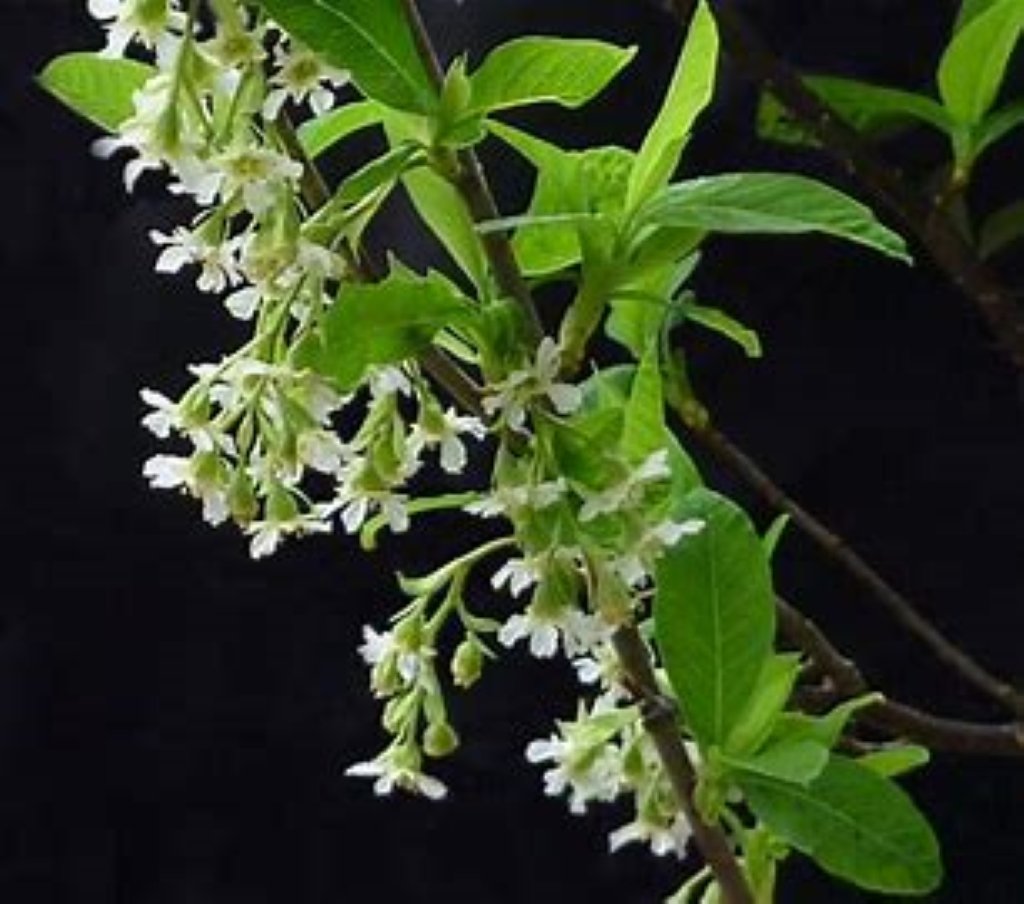
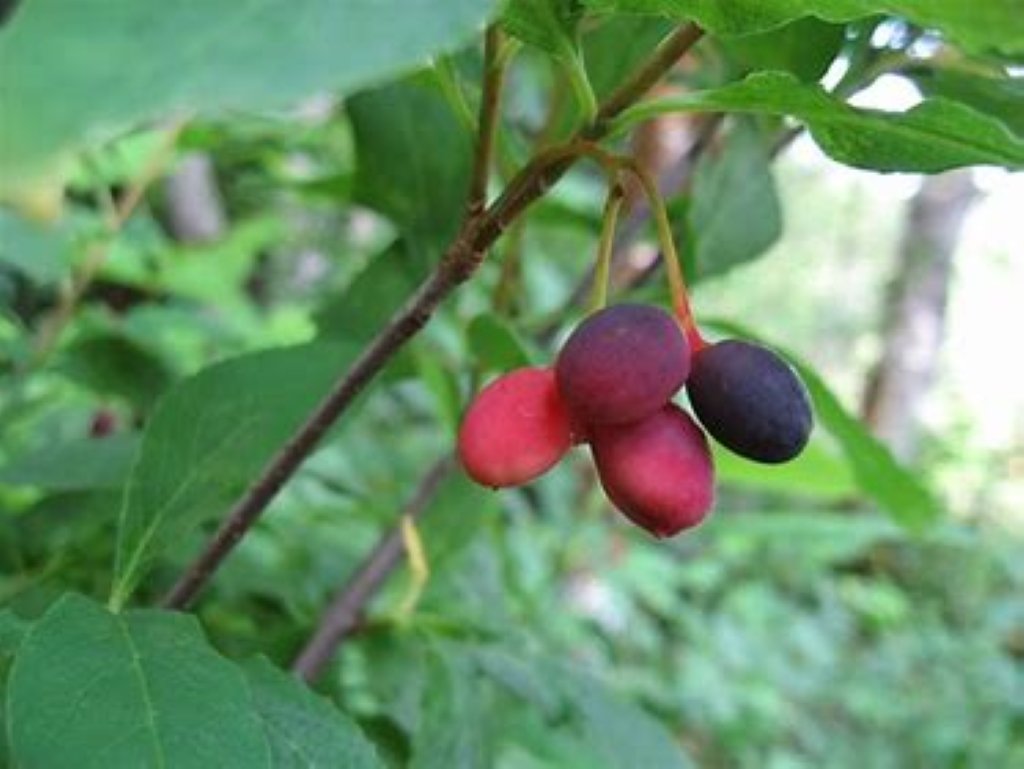
Indian plum was named for the plum-like fruit that develops and ripens in the fall. While the fruit resembles a small plum, Native Americans called the fruit “choke-cherries.”
Plant Requirements:
Zone: 6 to 10
Sun: Partial shade
Moisture: Medium
Plant Characteristics:
Type: Deciduous shrubs
Native: Yes
Size: 10 ft high x 12 ft wide
Bloom: This is a very early bloomer with dangling white flowers appearing from February to April. The white flowers have five lobes with a green calyx (sepals form a cup-like whorl around the petals). The flowers appear before the leaves are visible. Its fall-ripening fruits are peach-colored and mature to bluish black with a white matte coating (called bloom), like other non-native commercial blue plums.
Additional Characteristics: The male and female reproductive parts grow on separate trees. To yield fruit, both female and male plants need to be planted near one another. This tree is found from the Vancouver to Victoria area of British Columbia to California’s Santa Barbara County. Indian plum grows on the western slopes of the Cascades and continues to the coast and also inhabits the Sierra Nevadas.
Structure and Shape: As a deciduous shrub or tree, it has an upright growth habit and can spread by suckers. Indian plum has green lance-shaped leaves that are gray-green underneath and fuzzy. If the leaves are crushed, they give off a cucumber, watermelon-rind scent.
Adaptation: The tree does well on all Northwest sites from dry woodland to moist areas. It does best with rich humus soil. This plant can be found growing in Washington, Oregon and northern California.
Pests: No known pests.
Garden Use: Indian plum’s early blooming makes it a great addition to the landscape garden. However, this plant’s thicket-forming, suckering habit is not well-suited for formal gardens. It is shallow-rooted and needs frequent watering the first year after planting. Plant both male and female trees if you want this species to bear fruit.
Use by People: Indigenous Americans were known to have eaten the fruit fresh, dried, or cooked. Parts of the plant were also used for medicinal purposes.
Use by Wildlife: Indian plum attracts birds, bees, hummingbirds and butterflies. The fruit provides food for deer, coyotes, rodents and squirrels.
Sources: Plants of the Pacific Northwest Coast, Jim Pojar and Andy MacKinnon, Lone Pine Publishing, 2004; pnwplants.wsu.edu; nativeplantspnw.com.


Of the 16 species of ash native to North America, Oregon ash is the only ash native to the Northwest. Because the ash prefers wet areas, it is commonly found in lower elevation near river valleys, streams, and flood plains.
Taxonomy: Oleaceae family (Olive)
Plant Requirements:
Zone: 6-7
Sun: Full sun to partial shade
Moisture: Prefers moist to wet soil in floodplains and wetlands but is tolerant of seasonally wet soil.
Plant Characteristics:
Type: Deciduous tree
Native: Yes
Size: 70 ft high x 70 ft wide
Bloom: Before the leaves bud out, small almost yellow (male) and green (female) flowers appear on separate trees in spiked clusters at the tips of twigs. This blooming happens in April or May.
Additional Characteristics: Bark turns a greyish-brown and fissures with diamond shapes develop as the tree ages. It lives about 250 years.
Structure and Shape: The Oregon ash is a medium to large deciduous tree with a narrow dense crown, branches that spread upward, and a short trunk. It can reach 80 feet in height. Leaves are 5-10 inches long, pinnately compound, and oppositely arranged. Each leaf has 5-7 oval-shaped leaflets which appear dark green above and woolly underneath and they turn yellow in the fall. Appearing only on the female trees, paddle-shaped winged fruits (samaras) are about 1 inch long and bear only a single seed. The fruits grow in large drooping clusters and resemble half a maple fruit. These spin in the wind when dispersed.
Adaptation: Oregon ash will grow in swampy, undrained soil that most trees will not tolerate. It is found from the southern coast of British Columbia, west of the Cascades in Washington and Oregon, and to the coastal ranges and the Sierra Nevadas of southern California.
Pests: Fungi such as anthracnose, nectria canker, fungal blight, and leaf spot all attack and distort leaves but do not threaten the life of the tree. Emerald ash borers can kill this species. Aphids are commonly spotted on these trees.
Garden Use: Oregon ash is used for erosion control, to restore flood plains, and as a hedgerow or windbreak.
Use by People: Traditional Indigenous American wisdom suggested this tree provided protection from snakes and it was believed that a snake would not crawl over an ash twig. Areas where this tree grew were believed to be free from poisonous snakes. Indigenous Americans made canoe paddles and simple tools from the wood and used it for firewood. Today this tough wood is used to make furniture, sports equipment barrels, and tool handles as well as being used for firewood.
Use by Wildlife: Oregon ash attracts birds and small mammals who eat the winged seeds. The foliage is eaten by butterfly larvae and passing deer and other browsers.
Sources: Plants of the Pacific Northwest Coast, Jim Pojar and Andy MacKinnon, Lone Pine Publishing, 2004; pnwplants.wsu.edu; oregonflora.org; nativeplantspnw.com.


Oregon white oak was named after Nicholas Garry, a deputy governor for the Hudson’s Bay Company. It is the only native oak in Washington state.
Taxonomy: Fagaceae family
Plant Requirements:
Zone: 4 to 9
Sun: Full sun
Moisture: Dry
Plant Characteristics:
Type: Deciduous tree
Native: Yes
Height: Up to 90 ft high x 125 ft wide
Bloom: As the leaves appear in spring, so do tiny inconspicuous greenish-yellow male and female flowers that age to tan or red-brown. Male flowers are in the form of hanging catkins and females are single or in smaller clusters.
Additional Characteristics: The tree bears fruit in the form of acorns about an inch long in late summer or fall. A shallow rough-surfaced cup encases the lower third of the acorn.
Structure and Shape: Oregon white oak forms a broad, rounded canopy that gives it a stout and stately appearance. It may have a short and crooked growth habit in rocky habitats. Leaves are simple, four to six inches long, alternate, deeply lobed, and pinnate with seven to nine irregular rounded lobes. Summer leaves are dark green above and paler beneath. Fall color ranges from mostly brown to gold with occasional dull red. Bark is light grey with narrow fissures and ridges when mature.
Adaptation: This native is located from British Columbia south to Los Angeles, mostly on the west side of the Cascade mountains in sunny locations. It is not tolerant of shade and grows in dry, open grasslands and on dry, rocky slopes. The tree forms a deep tap root and is very wind resistant; large trees are fire resistant.
Pests: Galls are homes for insects that sometimes appear on the leaves of Oregon white oak but do no lasting damage to the tree. Galls provide a place for the insects to feed, lay eggs, and develop. The damage is aesthetic and may cause an ornamental tree to become unsightly.
Garden Use: The tree’s light-colored bark and elegantly intricate branching pattern contribute to its ornamental value. Its branches add interest to the winter landscape after the leaves have dropped in the fall. It is best used in gardens with lots of light and room to grow in dryish porous gravelly soils, where it can become a grand tree over time. When conditions are right, it is a wonderful tree for spacious lawns, parks, and avenues.
Use by People: Indigenous Americans, who traditionally ate lots of the slightly sweet acorns, would soak the nuts to leach out the tannins or bury them for the winter to consume in the spring. Small quantities typically would have been eaten without preparation. The bark was used as a treatment for tuberculosis and other ailments. Today, the wood is used to manufacture furniture and flooring, and it also makes good firewood.
Use by Wildlife: Acorns and leaves of young sprouts and shoots are eaten by deer, bear, raccoons, livestock, and many other small mammals and birds. Acorns provide an important food source in winter when other foods are scarce. Oregon white oak also provides cover and shade for wildlife.
Sources: Plants of the Pacific Northwest Coast, Jim Pojar and Andy MacKinnon, Lone Pine Publishing, 2004; Native Trees of Western Washington, Kevin W. Zobrist, WSU Press, 2014; pnwplants.wsu.edu; nativeplantspnw.com.

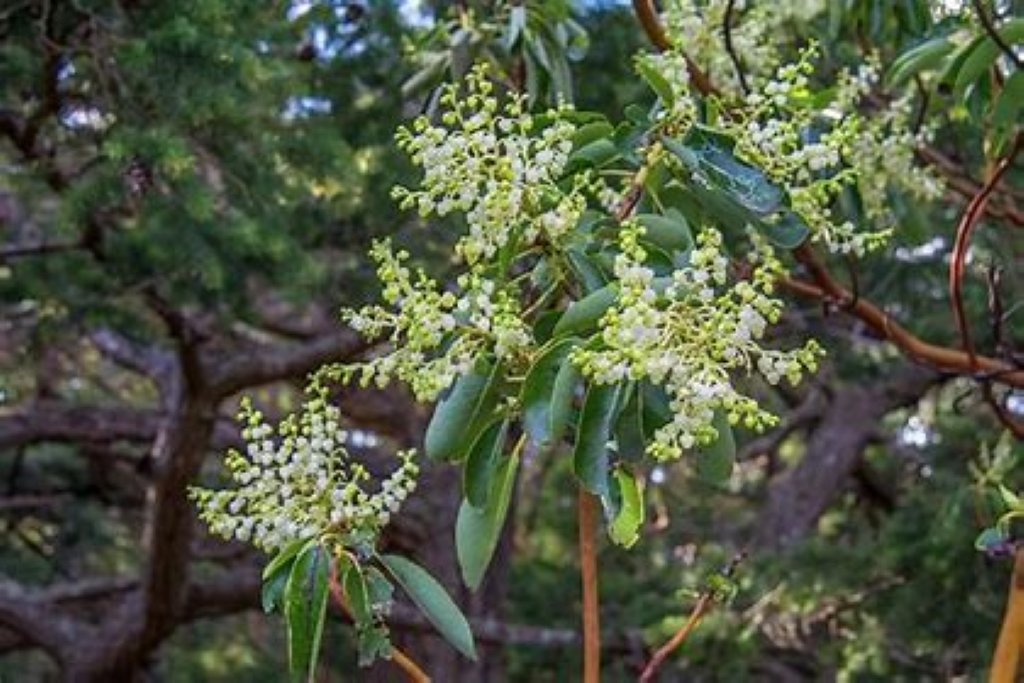

One of the most recognizable native trees in the PNW, the Pacific madrone is a small to medium-sized broad-leaved evergreen tree with heavy branches covered in young chartreuse-colored bark changing into older brownish-red bark which distinctively peels off.
Taxonomy: Ericaceae family
Plant Requirements:
Zone: 8
Sun: Full to partial sun
Moisture: Dry
Plant Characteristics:
Type: Evergreen trees
Native: Yes
Size: 19-100 ft high x 20-75 ft wide, the largest member of the Ericaceae family
Bloom: White or pink urn-shaped blooms April to June, morphing to striking red or orange berry globes with a granular or bumpy surface in autumn. Berries sometimes persist on the trees until late December.
Additional Characteristics: Trunk and branches display patterns of peeling brownish-red bark with smooth olive to red wood beneath. Thick leathery leaves, which fall over a period of months, are arranged alternately on stems and are oval and broad, ranging in size from 1-4 inches long and 2-3 inches wide. This tree is the only native broad-leaved evergreen in our region. The Pacific madrone has no pitch. It can be found along the Pacific coast from southern British Columbia all the way down to San Diego and is most abundant in the coastal cliffs and hills.
Structure and Shape: These trees are phototropic, meaning that when they are growing in competition with other trees, they will often grow taller or horizontally as they reach to seek more light. The contorted growth habit and distinctive flaky bark make them a striking specimen.
Adaptation: This tree likes dry, sunny spots with south or west exposure, is intolerant of dry soils and does not tolerate soil disturbance. Seedlings are difficult to establish with slow growth. Pruning often leaves branches open to infection.
Pests: None reported. However, leaf spots caused by multiple fungi can make a madrone unsightly. These trees are also prone to root rot and cankers.
Garden Use: Useful for erosion control, hedgerows, and windbreaks. As it sheds leaves and bark, it is often considered a messy tree.
Use by People: Indigenous American tribes used the bark and leaves for medicinal purposes. Today, the dense wood of the Pacific madrone makes excellent firewood, as well as attractive veneer, furniture, and hardwood floors.
Use by Wildlife: Flowers attract birds, butterflies, and hummingbirds while the berries attract mule deer, raccoons, and bears.
Sources: Plants of the Pacific Northwest Coast, Jim Pojar and Andy MacKinnon; Lone Pine Publishing, 2004; pnwplants.wsu.edu; oregonflora.org; nativeplantspnw.com.


This tree was named red alder because its freshly cut wood develops a red stain and a red dye can be made from its inner bark, not because it puts on a good fall show (it doesn’t). It is the most common native hardwood in the Pacific NW.
Taxonomy: Betulaceae family
Plant Requirements:
Zone: 5 to 8
Sun: Full sun
Moisture: Moist to dry
Plant Characteristics:
Type: Deciduous trees
Native: Yes
Height: 60 ft high x 30 ft wide
Bloom: In the fall, alder trees produce both male and female flowers on the same tree. Female flowers evolve to resemble tiny cones (strobiles) that stay on the tree until the next autumn while male flowers are long skinny catkins that drop from the tree in spring.
Additional Characteristics: Bacteria found on red alder roots take sugars from the tree and convert atmospheric nitrogen to a form that is usable by the tree. When nitrogen-rich alder leaves fall, they decompose and fertilize the surrounding soil. There is very little fall color.
Structure and Shape: The tree typically has a fairly straight trunk with an open or dome-shaped crown. Alternately arranged leaves are ovate in shape, 3-6 inches long with prominent leaf veins and serrated edges that are coarsely toothed and roll under slightly. Leaves are green on top and lighter green underneath with reddish brown hairs. Bark is smooth and light grey/brown but appears to turn white with age because lichens form a crust that adheres to the tree. The lichens are not harmful and their presence suggests good air quality because they are sensitive to pollution. The bark also sports horizontal lines called lenticels that function as air exchange pores.
Adaptation: Fast-growing, shade-intolerant and short-lived (60-80 years), red alder can quickly take over disturbed land. It can grow in a wide variety of soil types. Red alder’s range extends from southern California north to southeastern Alaska.
Pests: Tent caterpillars and leaf beetles are often found on these trees but are not considered to cause long-lasting harm.
Garden Use: Red alder can be used to help restore disturbed land because of its fast growth, willingness to grow in various soil types, and nitrogen-fixing qualities. The tree mixes well ornamentally with other native trees and shrubs in larger landscapes.
Use by People: Historically, red alder wood was used for firewood and to make masks, paddles, dishes, utensils, and much more. It was used to smoke salmon and in friction fire-starter sets. Bark was used as a dye and for medicinal teas and tonics and food. Currently, red alder wood is used for firewood and to make furniture, cabinetry, paper, and paper products. Red alder bark contains salicin, which is chemically similar to acetylsalicylic acid, the active ingredient in aspirin.
Use by Wildlife: Some birds eat the seeds. Leaves, twigs, and buds of young trees are eaten by deer and elk who also enjoy the habitat provided by stands of red alder. Beavers build with stems and trunks and also eat the bark.
Sources: Plants of the Pacific Northwest Coast, Jim Pojar and Andy MacKinnon, Lone Pine Publishing, 2004; Native Trees of Western Washington, Kevin W. Zobrist, WSU Press, 2014; pnwplants.wsu.edu; nativeplantspnw.com.


With its lacy foliage, large white flower clusters and brilliant red berry clusters, red elderberry is a showy shrub. Since plant parts are toxic to humans, it should be placed with care in landscapes.
Taxonomy: Caprifoliaceae family
Plant Requirements:
Zone: 4 to 8
Sun: Full to partial sun
Moisture: Dry
Plant Characteristics:
Type: Deciduous shrubs
Native: Yes
Size: 20 ft high x 6 ft wide
Bloom: Large white clusters of flowers appear in April to May. These flowery domes have a fragrance some describe as being unpleasant. Mid-summer the flowers morph into clusters of small red berry like fruits.
Additional Characteristics: Red elderberry leaves, flowers, roots, and unripened fruits, including seeds, are toxic to humans as these contain cyanide-producing glycosides.
Structure and Shape: The branching stems form a vase shape. Leaves are pinnately compound with individual leaflets set in an opposite arrangement. Each leaf is 6” to 12” long with 5 to 7 lanceolate leaflets, with a pointed apex and pointed and serrated margins. The foliage is dark green and smooth above and paler below. In the fall the leaves turn red before being shed for the winter.
Adaptation: Red elderberry is found throughout most of the United States and parts of Canada. This plant thrives in both full sun as well as partial shade. It will put on more growth with wetter site conditions.
Pests: No known pests.
Garden Use: This plant is especially suited to moist woodland and riparian gardens. Its umbrella-like canopy is ideal for underplanting smaller woodland shrubs. It does require some sun. Overgrown plants can be severely pruned.
Use by People: Indigenous Americans used the fruit of this plant for medicinal purposes, but removed the seeds as they are poisonous. The stems are hollow and were used by early Americans for pipestems or toy whistles.
Use by Wildlife: Attracts butterflies and birds. Butterflies enjoy the nectar of the flowers, while birds will feast on the ripe berries. Some mammals including bears, squirrels, racoons and mice eat the berries. Flowers are pollinated by bees, flies, and the wind.
Sources: Plants of the Pacific Northwest Coast, Jim Pojar and Andy MacKinnon, Lone Pine Publishing, 2004; pnwplants.wsu.edu; oregonflora.org; nativeplantspnw.com.
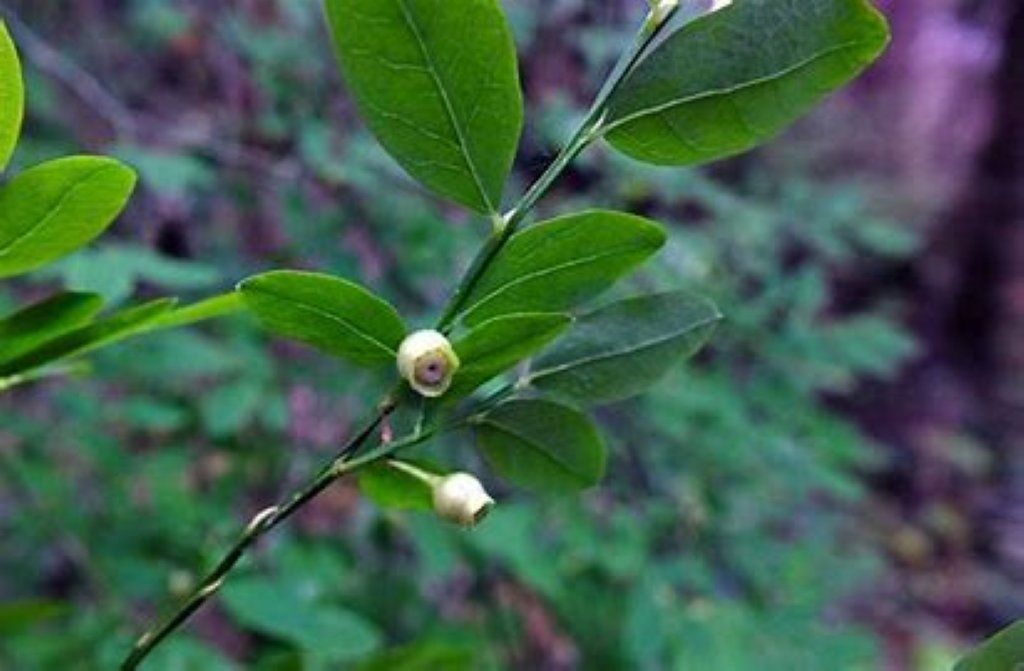

Often found growing on decayed wood and stumps in moist forest, this deciduous shrub has delicate branches and small red berries. Flowers and fruit attract insects, birds and mammals.
Taxonomy: Ericaceae family
Plant Requirements:
Zone: 6 to 8
Sun: Partial full shade
Moisture: Medium
Plant Characteristics:
Type: Deciduous shrubs
Native: Yes
Size: 10 ft high x 6 ft wide
Bloom: Pink flowers April to May
Additional Characteristics: The fruit is an attractive red berry and the shrub attracts birds.It is in the same genus (Vaccinium) as blueberries, cranberries and lingonberries.
Structure and Shape: The red huckleberry bears alternate very thin oval leaves ½ inch to 1 ½ inches long that are not toothed. The dainty green leaves are paler on their lower surface. Some leaves occasionally persist through winter. Branches are bright green and distinctively angled with a notable broom-like branching habit. Older stems are light brown with thin bark and many branches. Flowers appear singly in the axils of the lowest leaves of the youngest shoots and look like blueberry flowers, pale and waxy. After flowering, small red round berries appear that are approximately ¼ inch in diameter.
Adaptation: The shrub prefers moist woods from sea level to mid-elevations in the mountains. It does well in acidic soils and thrives on partial to full shade. In forests, it is often found growing out of rotting stumps and nurse logs. Red huckleberry grows along the Pacific Coast from southeast Alaska to central California.
Pests: None reported.
Garden Use: Excellent for the woodland garden and forested areas. The shrub can be used for erosion control. Rhododendrons are good companion plants. If seedlings appear, these can be transplanted in late winter.
Use by People: Indigenous Americans used the berries for food and fish bait in streams as the berries resemble salmon eggs. The berries, bark and leaves were also used for medicinal purposes. The delicate twigs are used by florists.
Use by Wildlife: Many birds and mammals eat the berries. Pollinators, including hummingbirds, are attracted to the flowers. The shrub is a caterpillar host plant and larval food source. The flowers are eaten by butterflies.
Sources: Plants of the Pacific Northwest Coast, Jim Pojar and Andy MacKinnon, Lone Pine Publishing, 2004; pnwplants.wsu.edu; oregonflora.org; wnps.org.

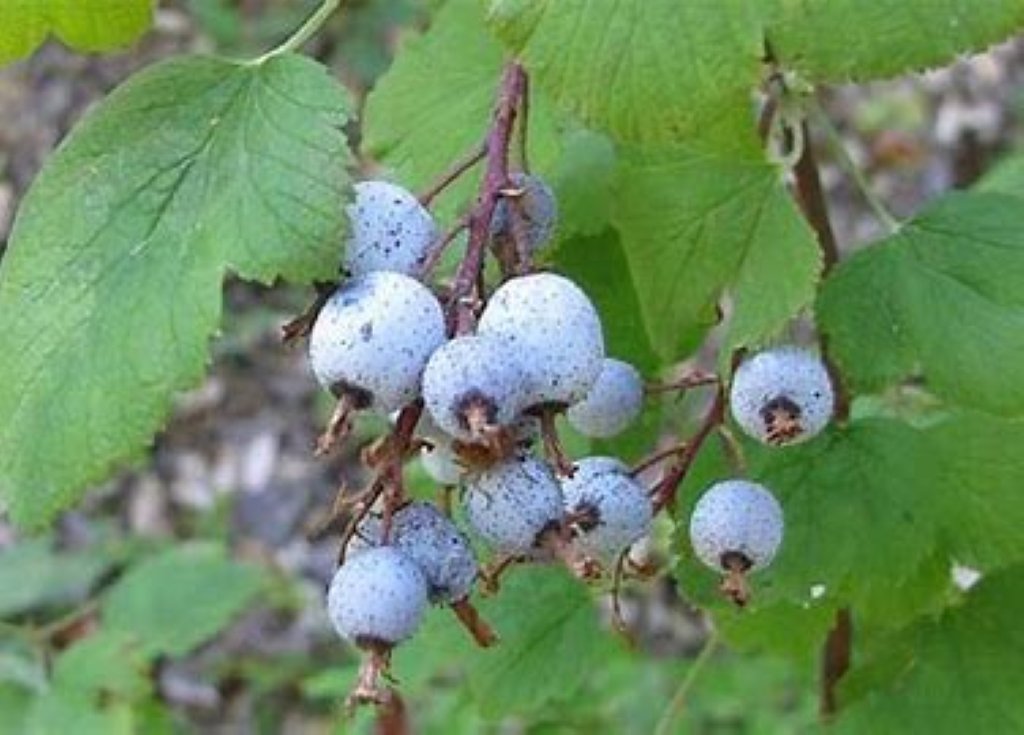
Sanguineum means blood-red or bloody – an interestingly graphic descriptor referring to the colorful flower that is a lovely harbinger of spring.
Taxonomy: Grossulariaceae family
Plant Requirements:
Zone: 5 to 9
Sun: Part shade – full
Moisture: Medium
Plant Characteristics:
Height: 10 ft high x 5 ft wide
Type: Deciduous shrubs
Native: Yes
Bloom: Tubular fragrant pink to red flowers in early spring
Additional Characteristics: The blue to black berries that develop in summer have a white waxy coating termed bloom. The leaves are fragrant in spring and have festive foliage in the fall.
Structure and Shape: The shrub is deciduous and grows on multiple thornless, upright, often crooked, reddish-brown stems. Green leaves are deeply veined, alternate, regularly or irregularly five-lobed and one to two and a half inches broad. Upper surfaces of leaves are smooth and the lower surfaces are paler and hairier. The early spring blooms are clusters of ten to 20 tiny flowers which hang down two to six inches. Flower colors can vary from white (rare) through a range of pinks to deep red.
Adaptation: Red-flowering currant prefers sun or partial shade and well-drained moderately fertile soil of near neutral or slightly acidic pH. Habitat includes open woods, forest gaps, dry rocky slopes and disturbed sites from sea level up to 6,000 feet. Red-flowering currant grows extensively from British Columbia south to northern California.
Pests: None reported.
Use by People: Indigenous Americans ate the berries fresh but they were not highly valued and were not usually collected for drying. The shrub was introduced to European horticulture in the early 1800’s by David Douglas and is now a desirable garden dweller. It can be used for erosion control (although roots are fairly shallow) or as a hedgerow and is thicket-forming. It is a popular garden shrub thanks to its brightly colored scented flowers in early spring.
Use by Wildlife: Flowers provide early spring nectar for hummingbirds, butterflies and other pollinators. The plant provides forage for larvae of more than two dozen species of moths and butterflies, and nesting sites or cover for songbirds and small mammals. Songbirds are reported to readily consume the berries, but they are often the last berries left in winter (other than those on the common snowberry, which seem to be unpopular as well).
Sources: Plants of the Pacific Northwest Coast, Jim Pojar and Andy MacKinnon, Lone Pine Publishing, 2004; pnwplants.wsu.edu; oregonflora.org; wnps.org; nativeplantspnw.com.


One common name for this shrub is red-osier, a reference to its reddish stems and to willows which are called osiers. The red-osier dogwood stems are highly favored by basket weavers.
Taxonomy: Cornaceae family
Plant Requirements:
Zone: 2 to 9
Sun: Full sun to part shade
Moisture: Wet
Plant Characteristics:
Type: Deciduous shrub
Native: Yes
Height: 15 ft high x 10 ft wide
Bloom: Small white flowers with four petals and stamens group together into dense flat-topped clusters. They bloom in late spring to early summer.
Additional Characteristics: After the flowers, mostly pollinated by bees, come clusters of white to bluish fruit appearing in late summer. Stems can be red to bright red.
Structure and Shape: An upright shrub, with multiple stems, the red-osier dogwood can be as wide as it is tall. It displays a dome-like, spreading canopy. The shrub spreads forming thickets with underground stolen. Branches simply lying on the ground can root easily. Smooth young stems are red (often bright red after frost), green, or yellow. Fall leaves turn purplish red. The leaves are oval and opposite. They are two to four inches in length and rounded at the base with pointed tips. An interesting attribute is the five to seven parallel veins that curve out from the central vein to the leaf edges and then converge at the tip. One can see white threads running through the veins if a leaf is torn.
Adaptation: A vigorous shrub, it adapts to many soil types. However, it prefers moist well-drained locations in the full sun, such as along streams, lakesides, in wet meadows, open forests, and along forest edges. Red-osier dogwood is native from the northern reaches of North America to as far south as Virginia, southern California and Chihuahua, Mexico.
Pests: None reported.
Garden Use: The red stems are particularly valued for adding color in winter gardens. Pruning out part of the old wood each year encourages more colorful new growth stems. Purple leaves, white to bluish berries and red branches make for great autumn color. The shrub is used in rain gardens and stabilizes stream banks. In summer it can act as a both a visual and physical screen and may be an effective space filler.
Use by People: Red-osier stems were used by Indigenous Americans to make arrows, fish traps and baskets. Dried bark was smoked by some tribes during ceremonies. Bark was also used to make dye and boiled and used medicinally for multiple ailments. Sap was used on arrowheads to poison animals. Some tribes ate the berries, often mixed with serviceberries. Beautiful red branches are still used to make attractive floral arrangements and in basketry.
Use by Wildlife: Deer, elk, moose, mountain goats and rabbits use it for browsing. Berries and bark are eaten by small animals, such as mice, voles and other rodents, and larger mammals such as beaver and bear. Various birds and trout eat the fruit and buds. The shrub provides cover and nesting places for small mammals and birds. Beavers also build dams and lodges with it.
Sources: Plants of the Pacific Northwest Coast, Jim Pojar and Andy MacKinnon, Lone Pine Publishing, 2004; pnwplants.wsu.edu; oregonflora.org; wnps.org; nativeplantspnw.com; landscapeplants.oregonstate.edu.


A very common forest understory shrub in our region, it forms an almost continuous shrub layer in many drier coniferous forests and is also common in some wet or boggy coniferous forests.
Taxonomy: Ericaceae family
Plant Requirements:
Zone: 6 to 8
Sun: Partial shade
Moisture: Dry
Plant Characteristics:
Type: Evergreen shrubs
Native: Yes
Height: 5 ft high x 5 ft wide
Bloom: Five to 15 white or pinkish, urn-shaped flowers 1/4 to 3/8 inches long form at branch ends from March to June. Flower stalks bend so that flowers are all oriented in one direction.
Additional Characteristics: The flowers morph into reddish-blue to dark-purple “berries” (actually fleshy sepals) up to 3/8 inches broad.
Structure and Shape: Salal is an evergreen shrub that can grow to five-by-five feet in the shade, but may be smaller in sunny locations. The shrub shape varies from creeping to erect and spreads by layering, suckering and sprouting. Stems are hairy and branched. Leaves are simple, alternate, persistent, ovate to oval and two to four inches long. They are leathery and shiny on top and paler underneath. Leaf margins are sharply and finely toothed along their edges. The plants are monoecious (literally one house), meaning they have male flowers and female flowers in separate structures on the same plant. Female portions host the flower clusters and berries.
Adaptation: Salal is one of the first plants to return after a forest fire because of its deep and wide root system. It does best in tandem with native conifer forests and can handle most soil types. Salal grows extensively from Alaska to southern California at low to medium elevations.
Pests: None reported.
Garden Use: The shrub can be used in landscaping for erosion control, as a hedgerow and as ground cover: David Douglas (Douglas-fir) liked the plant so much he brought seed to Britain in 1828 for use as a garden ornamental.
Use by People: The berries were often the most plentiful and important fruit for Indigenous Americans. They were eaten fresh, dried into cakes, mixed with other berries for trade and used to sweeten other foods. Leaves and branches were used in cooking. Cut salal branches are widely used in modern floral arrangements. David Douglas (Douglas-fir) liked the plant so much he brought seed to Britain in 1828 for use as a garden ornamental. The shrub can be used in landscaping for erosion control, as a hedgerow and as ground cover.
Use by Wildlife: Flowers provide nectar for hummingbirds, bees, and butterflies. Berries, which may remain on the plant into winter, are enjoyed by many birds and mammals including the native Douglas squirrel. The shrub provides important nesting cover for birds such as the towhees that nest on the ground.
Sources: Plants of the Pacific Northwest Coast, Jim Pojar and Andy MacKinnon, Lone Pine Publishing, 2004; pnwplants.wsu.edu; oregonflora.org; wnps.org; nativeplantspnw.com.
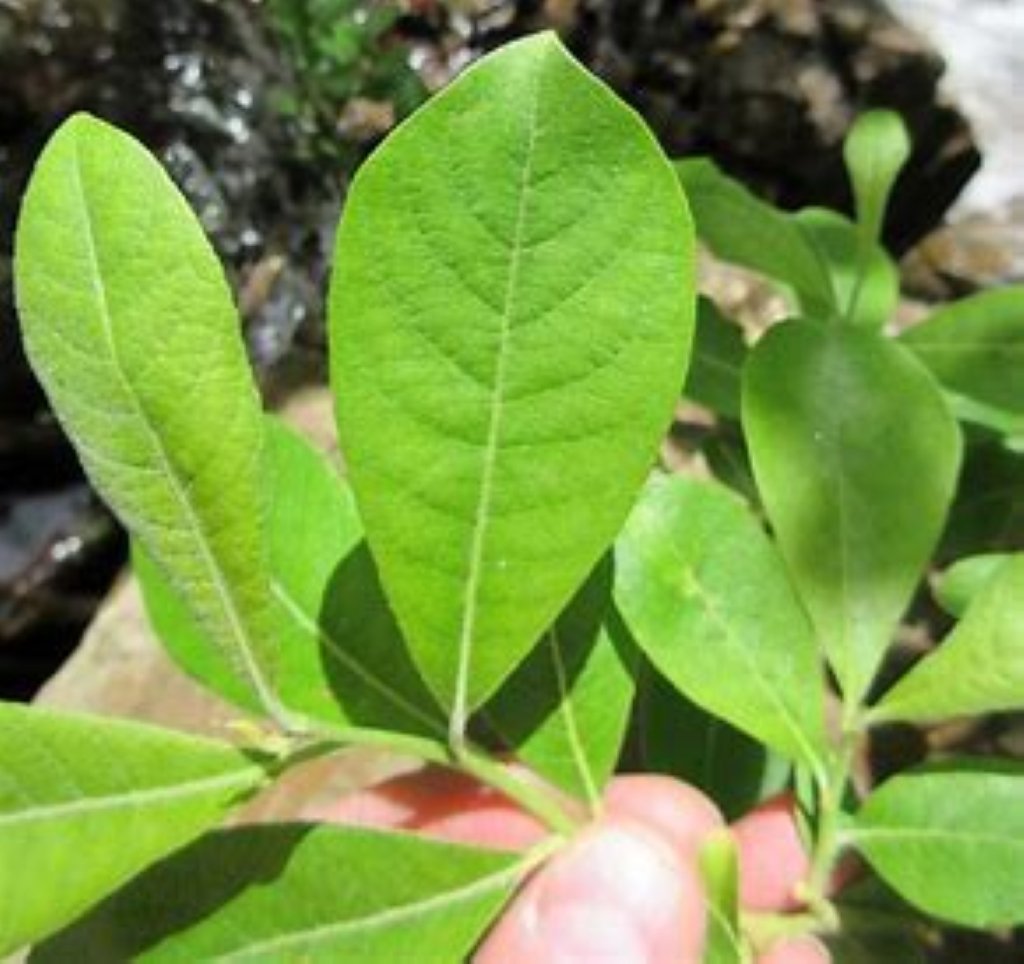

Named after naturalist John Scouler, Scouler’s willow is also known as upland willow because it can thrive in drier habitats and can be found in both wetlands and non-wetlands.
Taxonomy: Salicaceae family
Plant Requirements:
Zone: 3 to 9
Sun: Full to partial sun
Moisture: Moist to dry
Plant Characteristics:
Type: Deciduous shrub or small tree
Native: Yes
Height: 6 to 40 ft high
Bloom: Drooping catkins appear before or with leaves. Male catkins are green and yellow, while female catkins are green. Insects are primary pollinators, but wind also carries the pollen. After fruits form in early spring, seeds with fine silky hairs are scattered by the wind, like the cottonwood.
Additional Characteristics: Because there are dozens of willow species in the Pacific Northwest and hundreds in the world, exact identification is difficult. However, they all play a similar role in the landscape, so it might not be important to know exactly at which willow you are looking.
Structure and Shape: Scouler’s willow is a fast-growing, large, spreading, multi-stemmed shrub or single trunk tree. Leaves are one to three inches long, pointed or rounded at the tip and widest above the middle, and they taper to a narrow base. At the base of each leaf stem are stipules, tiny pointed leaflike structures, which are a distinctive identifying feature. Leaves are dark green on the upper surface and have a lighter fuzzy underside with rust coloring caused by small hairs. They turn yellow to brown and drop in the autumn. Bark can be smooth or have a striped appearance as it ages.
Adaptation: Found in upland thickets, alongside streams, in clearings, at edges of forests and wetlands, and in open forests at low to middle elevations, Scouler’s willow invades disturbed sites. It is distributed across western North America from Alaska to California and found as far east as South Dakota.
Pests: The poplar-and-willow borer is a flightless snout beetle that may lay eggs just under the bark. When hatched, larvae mine into bark and branches to feed. This feeding may girdle branches and cause them to break, wilt the leaves or kill the branches. Severe infestations cause lumpy swollen bark with cracks and scars. Monitor for pests and manage appropriately to prevent more damage.
Garden Use: Although some may consider it too “weedy” for the more domesticated landscape, Scouler’s willow is useful for controlling erosion and may find a good home in a woodland garden.
Use by People: Indigenous Americans made string from the bark and baskets, and snares, toys, musical instruments, and other items from the branches. The bark, high in salicin, was used medicinally, salicin being the ingredient from which aspirin was first synthesized. Willow bark was the main source of pain relief before aspirin was developed. The wood was used in friction-fire starter sets.
Use by Wildlife: Willow leaves and bark are eaten by moose, deer, beaver, elk, bears, and small mammals. The branches are used by beavers to build dens and dams. Nectar and pollen are popular with bees and other pollinators. Willow buds, leaves, twigs, and seeds are eaten by birds. The tree or shrub also provides cover for many wildlife species. Along stream banks, it provides cooling shade and also drops woody debris into the water, benefiting salmon and other fish.
Sources: Plants of the Pacific Northwest Coast, Jim Pojar and Andy MacKinnon, Lone Pine Publishing, 2004; Native Trees of Western Washington, Kevin W. Zobrist, WSU Press, 2014; uwb.edu; nativeplantspnw.com.
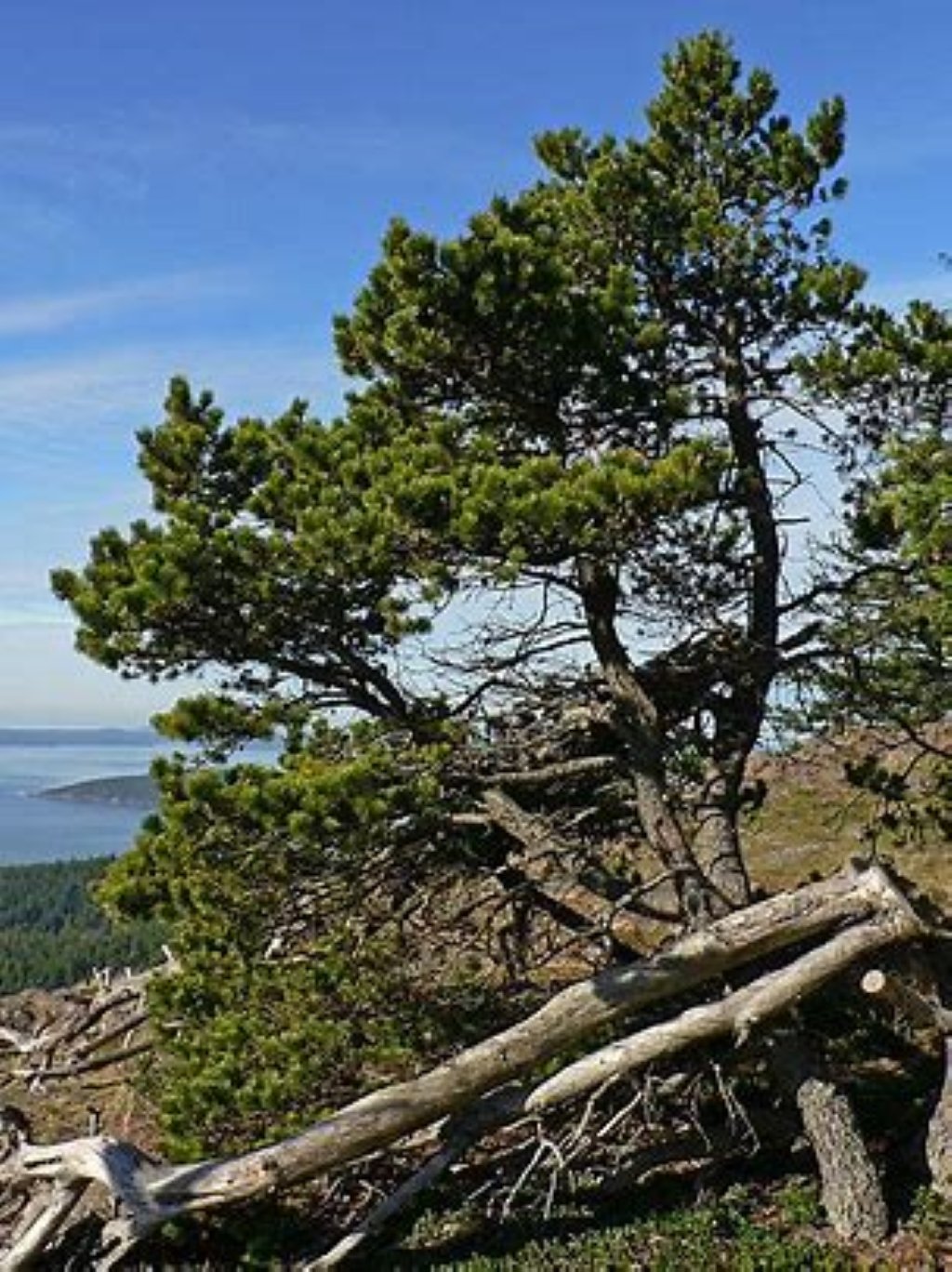

The common name of the plant, the shore or beach pine, is apt since it grows on the PNW coast and “contorta” refers to the twisted nature of the young needles. A relative, the lodgepole pine, Pinus contorta var. latifolia, is known for its tall, straight trunks which grow in the Rocky Mountains and on the east side of the Cascades. The lodgepole pine was used as the central pole in tepees.
Taxonomy: Pinaceae family
Plant Requirements:
Zone: 3 to 9
Sun: Full sun
Moisture: Dry
Plant Characteristics:
Type: Conifer, evergreen tree
Native: Yes
Size: 45 ft high x 30 ft wide
Bloom: The shore pine has both male and female flowers. The yellow male flowers are round clusters; the female flowers are reddish purple blooms which become prickly cones. The cones often point backwards towards the main trunk and are 1” to 2” long, prickly, and egg-shaped. Shore pines bloom for about 60 days, beginning in mid-May. The following year, in the fall, the cones mature, and seeds from non-serotinous cones (those in which the seeds are not constrained from releasing) usually drop in the winter. Serotinous cones, which are sealed within resin, open after a fire, remain on a tree and may be viable for years. Along coastal regions, serotinous cones are rare.
Additional Characteristics: Shore pine is a northwestern native conifer that grows along the Pacific Ocean from Alaska into northern California.
Structure and Shape: This species grows fast, usually to a height of 40 to 50 feet in a somewhat sprawling and irregular, broadly rounded form. The tallest shore pines are over 100 feet and the oldest are about 250 years old. No two trees look similar and rarely does shore pine achieve a straight trunk. Branches bear needles in bundles of two. These needles are typically 1” to 3″ long, stout, somewhat flattened, and often twisted along their length.
Adaptation: Shore pine is highly adaptable to many soil conditions, wet or dry, from sand dunes and bogs to rocky hilltops. It tolerates wind and salt-spray with ease and is tolerant of low nutrient conditions.
Pests: European pine shoot moth has been found to cause distorted shoots.
Garden Use: The shore pine is widely utilized in the landscape for its tough stature and adaptability. This pine with its open form and interesting branching patterns is often planted in drifts. Seaside winds on the shoreline shape the pines into fascinating sculptures. In fast-growing species such as the shore pines, controlling growth may be an effort in futility. However, the “candles” produced in the spring can be pinched to try to control the size. This method is usually more effective than shearing or pruning.
Use by People: Indigenous Americans used the pitch on open sores. Today, the lumber is used for woodworking project, such as cabinets and knotty pine paneling.
Use by Wildlife: Nationwide, the oak is considered the most valuable tree to animals; however, in the Pacific region, pines are the most valuable. They have nutritious, oily seeds sought by birds. Small mammals also eat the seeds as well as the foliage, bark, and wood. The trees provide materials for nesting, roosting, and cover for many animals.
Sources: Plants of the Pacific Northwest Coast, Jim Pojar and Andy MacKinnon; Lone Pine Publishing, 2004; pnwplants.wsu.edu; oregonflora.org; nativeplantspnw.com.
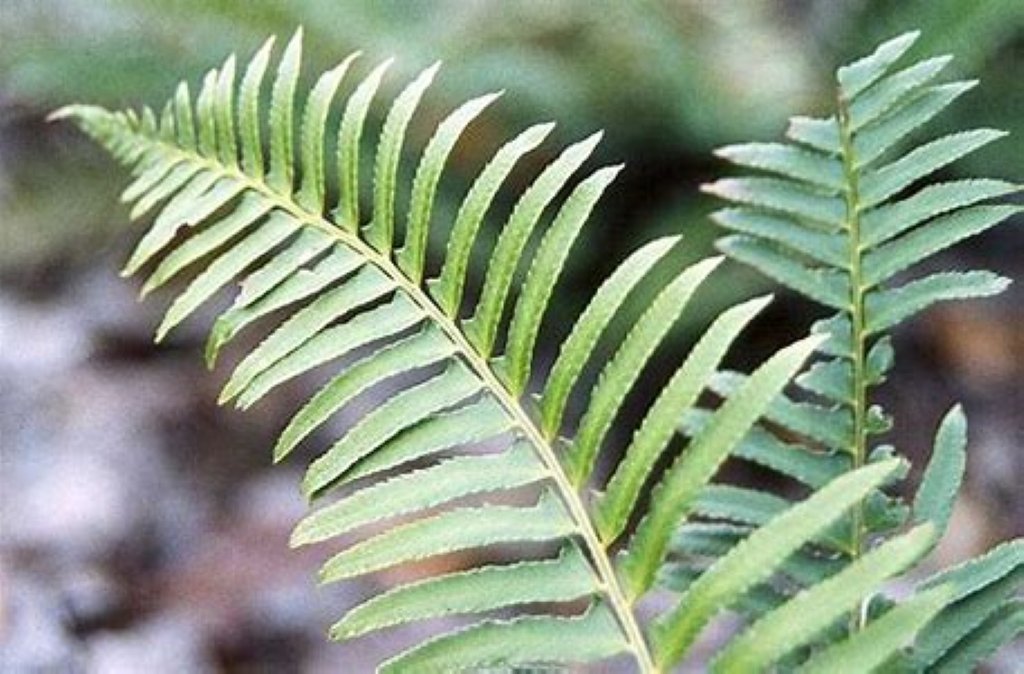
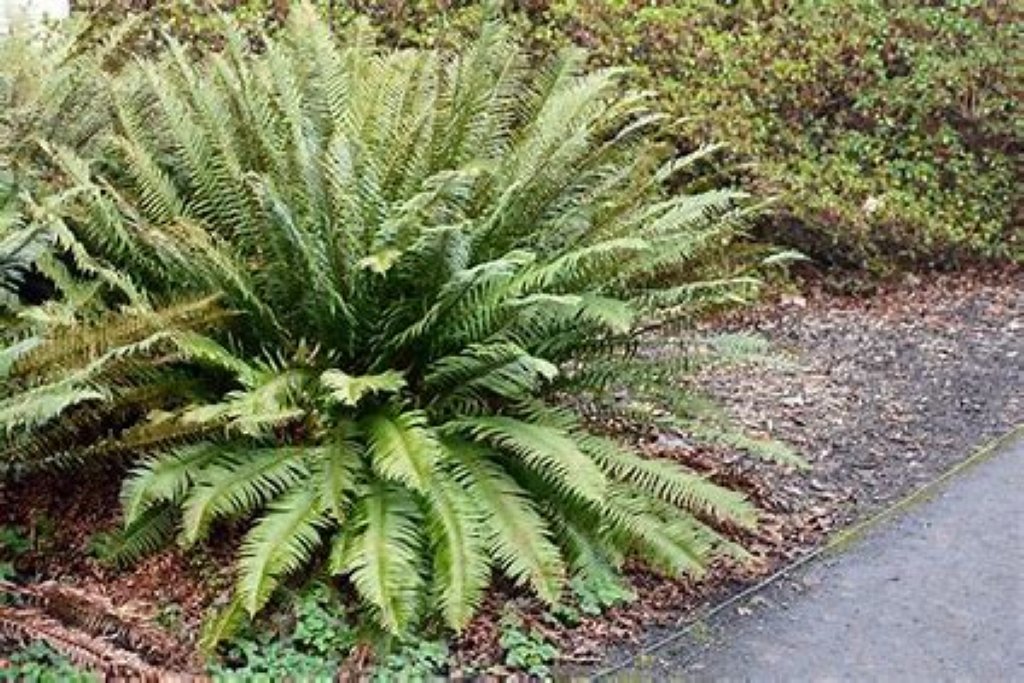
The Latin botanical name of a plant often gives a hint for identifying a specimen. Polystichum means many rows, referring to the arrangement of the spore cases on the undersides of the fronds. Munitum means armed with teeth, referring to this fern’s toothed fronds.
Taxonomy: Dryopteridaceae family
Plant Requirements:
Zone: 3 to 8
Sun: Partial to full shade
Moisture: Medium
Plant Characteristics:
Type: Ferns, evergreen
Native: Yes
Size: 4 feet high to 7 feet wide
Structure and Shape: The sword fern is an evergreen ground cover. Large erect to arching fronds form a crown from a stout, woody, scaly rhizome. Each frond is pinnately compound and lance-shaped. The fronds are comprised of many simple alternate leaflets or pinna (plural pinnae). These leaflets are finely serrated, have a small lobe pointing forward at the bottom and have clusters of brown spore cases, called sori, arranged in two rows on their undersides. In early spring, the young fronds, or fiddleheads appear and begin to slowly unroll. Fiddleheads are covered in fine silky, brown hairs. Each frond may reach four to six feet long and will live for several years.
Adaptation: Sword fern does best in moist shaded conditions but will survive well on dry sites once established if there is full shade. It can survive on nutrient poor sites, but will not spread out as well. It often adapts to drier, sunnier sites in landscapes. When grown in the sun, the fronds are dwarfed and more erect; and have leaflets that are crisped and crowded so they overlap. Young ferns are also more frilly-looking. This fern is one of the most prevalent Northwest native plants and is found on moist shaded forest floors at low to middle elevations from the Yukon to southern California.
Pests: None reported.
Garden Use: Sword ferns are planted as ornamentals in garden landscapes especially shady, moist forest settings.
Use by People: Indigenous Americans used the fronds for lining baking pits and storage baskets and spread them on drying racks to prevent berries from sticking. They were used for placemats, floor coverings, bedding, games, dancing skirts and other decorations. Various parts of the plant were also used medicinally. Today these fern fronds are frequently used by florists.
Use by Wildlife: Elk, black-tailed deer, mountain beavers, mountain goats and black bears eat the fronds. Sword fern is a caterpillar host plant and larval food source. The plant provides nesting material and cover for many birds, deer and small mammals.
Sources: Plants of the Pacific Northwest Coast, Jim Pojar and Andy MacKinnon, Lone Pine Publishing, 2004; pnwplants.wsu.edu; oregonflora.org; wnps.org.
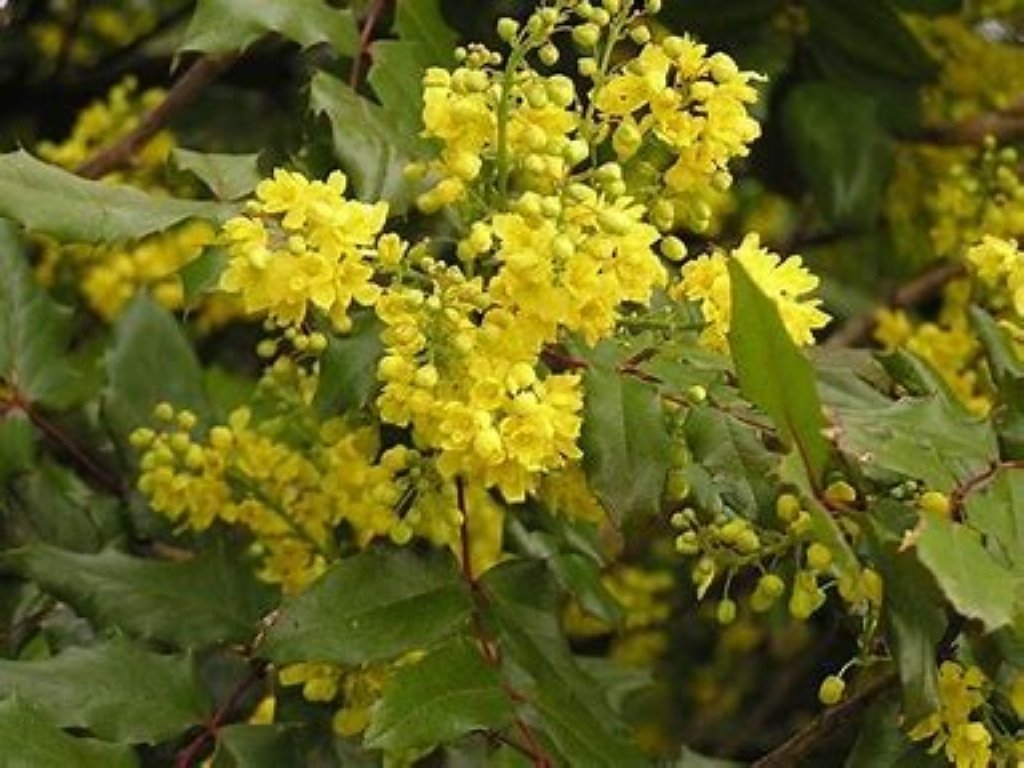

As the state flower of Oregon, the tall Oregon grape is known for its showy yellow flowers in the spring followed by clusters of blue-black berries in the fall.
Taxonomy: Berberidaceae family
Plant Requirements:
Zone: 5-9
Sun: Partial shade
Moisture: Dry
Plant Characteristics:
Type: Evergreen shrubs
Native: Yes
Size: 10 ft high x 5 ft wide
Bloom: The blooms appear in April as showy yellow flowers featured in erect terminal clusters. These produce blue-black berries with a whitish bloom and form elongated grape-like clusters.
Additional Characteristics: This species is named after English holly, Ilex aquifolium. Aquifolium means “leaves that have curved hooks like an eagle’s beak.” Other common names include Oregon-grape-holly, holly-leaved barberry, holly-leaved Oregon-grape, Oregon hollygrape, and mountain grape.
Structure and Shape: Tall Oregon grape is an evergreen shrub. Without a well-defined shape, it often forms scraggly clumps. Leaves are compound, up to 12” long, and are arranged in an alternate fashion. It has 5-9 leaflets per leaf with a central vein. The leaflets have sharp edges and resemble holly. The leaves are shinier that those of dull Oregon grape. The leaves are stiff and leathery feeling, with a dark green upper surface during the summer, and a bright red-purplish color in the winter. This shrub spreads by underground stems.
Adaptation: Tall Oregon grape is a native coastal plant found from British Columbia to northern California and stretches eastward across Washington to the panhandle of Idaho and western Montana. It is widely adaptable to a range of soil conditions. As a native plant, it is often found on dry, rocky, open sites, for example, along roadsides. Tall Oregon grape is often selected as a native plant for new plantings along major highways.
Pests: None
Garden Use: For years, tall Oregon grape has been chosen for its many landscaping attributes. It can be either an accent plant or a screen. The bronzy color of the foliage and the bright yellow and scented flowers translate to bold texture for an attractive addition to gardens. However, because of its spiny leaf edges, it is not well-suited for planting along walkways. While it can be grown in full sun or shade, partial shade is preferred. At first the shrub is a slow grower but once established it will grow quickly to full size. Old or disfigured stems can be pruned all the way to the ground.
Use by People: Indigenous Americans valued these plants, using the blue fruit and the yellow roots for dyes, especially for baskets. They also ate the berries and used them and the plant’s roots for medicinal purposes.
Use by Wildlife: Tall Oregon grape is attractive to pollinators including hummingbirds, bees, and butterflies. Birds eat the berries and the foliage provides cover for many species including deer.
Sources: Plants of the Pacific Northwest Coast, Jim Pojar and Andy MacKinnon; Lone Pine Publishing, 2004; pnwplants.wsu.edu; oregonflora.org; nativeplantspnw.com.

The western redcedar has many uses, including roofing, utility poles, fence posts, and various type of containers. The cedar leaf oil is often used for insecticides, shoe polishes, perfumes, deodorants, and veterinary soaps.
Taxonomy: Cupressaceae family
Plant Requirements:
Zone: 6 to 8
Sun: Full sun
Moisture: Moist to dry
Plant Characteristics:
Type: Coniferous trees
Native: Yes
Size: 150 ft high x 20 ft wide
Bloom: Pollen cones are small and red. Seed cones form beginning at about 10-20 years of age.
Additional Characteristics: Not a truecedar, the western redcedar is an arborvitae. It occurs mainly in forests with other coniferous trees rather than in a pure group. It likes moist, acid soil, but will also grow in drier, clay soil.
Structure and Shape: Typically grows to 150 feet tall, however, some older specimens reach 200 feet. The tree has an irregular crown, frequently with dead spike tops and has arching branches with flat fan-shaped sprays. The western redcedar is evergreen and has scale-like leaves with pointed growth. The foliage is green on the top side and white-striped on the under surface. Crushing the green growth will release a spicy fragrance.
Adaptation: The western redcedar does well along the coast range from California to Alaska and in the Rocky Mountains.
Garden Use: Often used as a large hedge, but will need a moist soil type. Full sun is necessary.
Use by People: The western redcedar has a title of “the cornerstone of northwest coast Indian culture” and has provided wood and bark for many generations. Old-growth wood was used for canoes, boxes, house planks, and roofing due to its resistance to rotting. The bark was made into clothing such as dresses for women, and the roots were used for baskets and rope. The inner bark was used for slow matches to carry fire from camp to camp and for creating mats and blankets. Parts of the tree were also used as a source of medicines.
Use by Wildlife: The tree provides protective and nesting cover to wildlife and produces a blue gray fruit that attracts cedar waxwings and other birds.
Sources: Plants of the Pacific Northwest Coast, Jim Pojar and Andy MacKinnon; Lone Pine Publishing, 2004; pnwplants.wsu.edu; oregonflora.org; nativeplantspnw.com.
